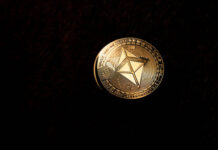Markets
A final push lower (in bonds) in yesterday’s Asian session saw the German 10-yr yield touching 3% and the US 30-yr yield kissing 5%. From there on, an oversold market started looking for a floor. A crash in the oil price did the trick from European noon, triggering investors to square some positions after a breath-taking sell-off which started this summer and accelerated after the September FOMC meeting (5%+ policy rate until end 2024). Brent crude prices tumbled from a start above $91/b to $86/b, their lowest level since end August. The move was partly technically related after a drop below the $90.5/b neckline of a double top formation. The Saudi/Russian additional oil production cut confirmation until December, failed to bring counterweight. The oil market is looking for more of an equilibrium as well with $90+ levels being perhaps too optimistic over future demand despite restricted supply. At the end of the session, US yields corrected between 6.3 bps (10-yr) and 9.8 bps (2-yr) lower. The outperformance at the front end of the curve started after the September ADP employment report, which fell short of expectations (+89k vs 150k). The positive run of job gains, dating back to Feb2021, is prolonged but momentum fades bringing the labour market more in balance. The September services ISM moderated as expected from 54.5 to 53.6. Details remained solid, with markets singling out the only weak point which was a more pronounced setback in new orders (51.8 from 57.5). The market implied probability of a final Fed rate hike before the end of the year fell back from 50% to 40%. German yields lost 3 bps to 8.4 bps but contrary to the US it was the very long end which outperformed. Yesterday’s correction on bond markets impacted equity and FX markets as well. While main European stock indices still faced a mixed to slightly weaker close, key US gauges rebounded up to 1.35% for Nasdaq. The dollar correction is modest so far (trade-weighted from 107.06 open to 106.80 close) but continues this morning. EUR/USD follows a similar trajectory from a low near 1.0450 to 1.0520 currently. After yesterday’s move, we believe that bearish bond momentum can be on hold with for some time with consolidation kicking in (rebound on stock markets and further correcting USD). Especially so, if tomorrow’s US payrolls report would show signs of a less robust labour market as well. The consensus bar (+170k) seems on the high end.
News and views
The National Bank of Poland reduced is policy rate by 25 bps to 5.75% yesterday after starting its easing cycle last month with an astonishing 75 bps cut. A further slowdown in CPI inflation in September 8.2%Y/Y from 10.1% justified the easing. While the decline is for an important part due to lower energy and food prices, the NBP also sees a further moderation in core inflation. Together with low economic activity/demand, the NBP expects this will support a further decline in consumer prices in the coming quarters, adding to the restrictiveness of monetary policy. The NBP reiterated that that the decrease in inflation would be faster if supported by an appreciation of the zloty, which it deems consistent with the fundamentals of the Polish economy. It is keeping the option open to intervene in the foreign exchange market. The 2-y zloty swap rate yesterday jumped more than 20 bps (close 4.72%). The zloty after touching an intraday low against the euro just below EUR/PLN 4.65, rebounded to close at EUR/PLN 4.60.
South Korean inflation accelerated substantially more than expected for a second month in a row (0.6% M/M and 3.7% Y/Y). Prices already rose 1.0% M/M and 3.4% Y/Y in August after touching a cycle low of 2.3%Y/Y in July. In a monthly perspective, price gains were mainly driven by higher transport costs (+1.3% M/M), food prices (1.6% M/M) and housing/utility costs (1.3%). Core inflation (excluding volatile food and energy prices) remained unchanged at 3.3%. Both the Korean finance minister and the Bank of Korea indicated that they expect inflation to return to the 3% area at the end of this year. The Bank of Korea after a January rate hike to 3.5%, kept its policy rate unchanged this year. The next meeting is scheduled for Oct 19. Today’s inflation data will force the BOK to maintain a hawkish stance to keep rates at a high level for longer. Yesterday, South Korea August production data also showed a surprisingly strong rebound of 5.5% M/M. The Korean won yesterday touched the weakest level of this year at USD/KRW 1363 on broad-based USD strength. This morning the won ‘rebounds’ modestly to trade in the USD/KRW 1350 area.













